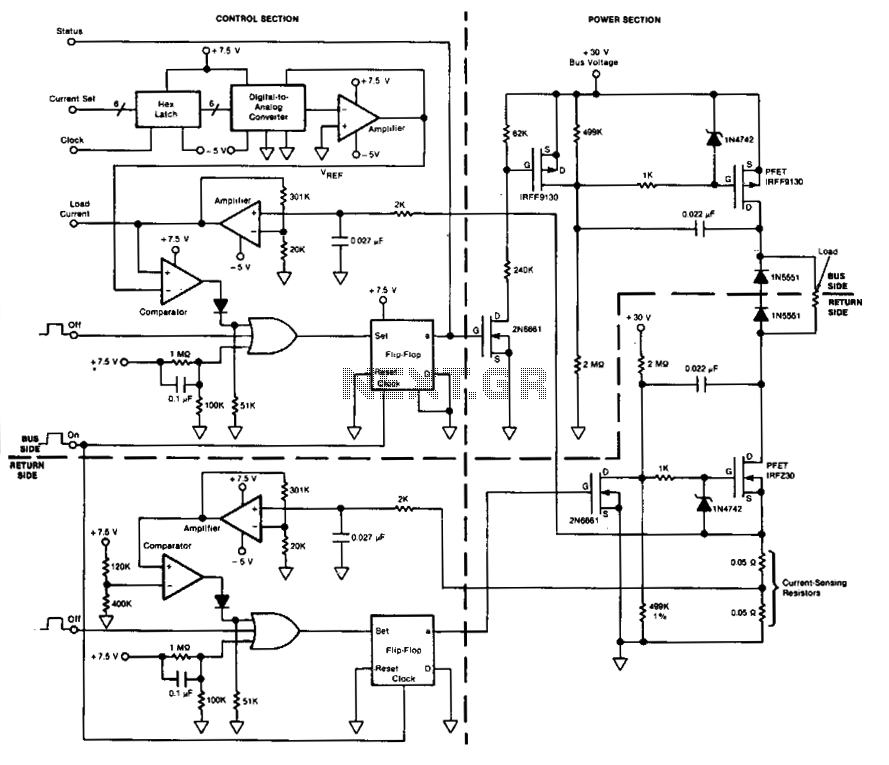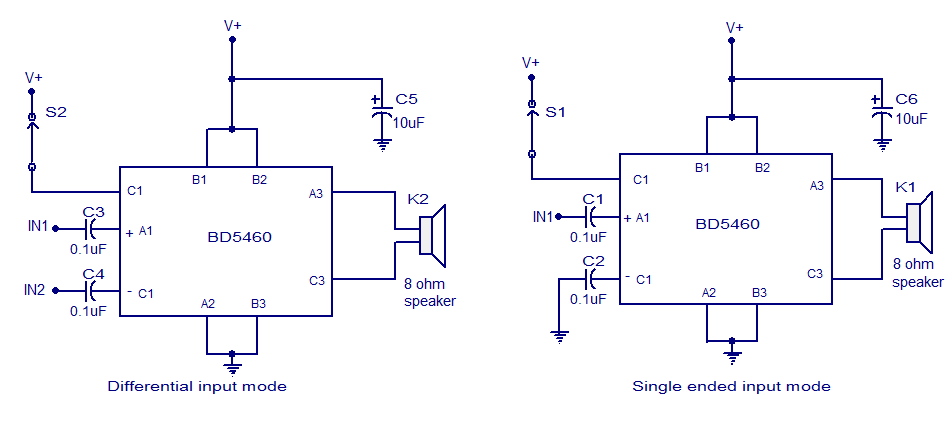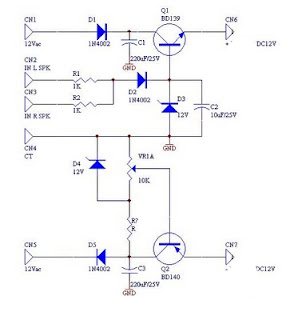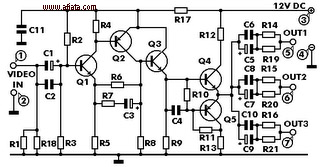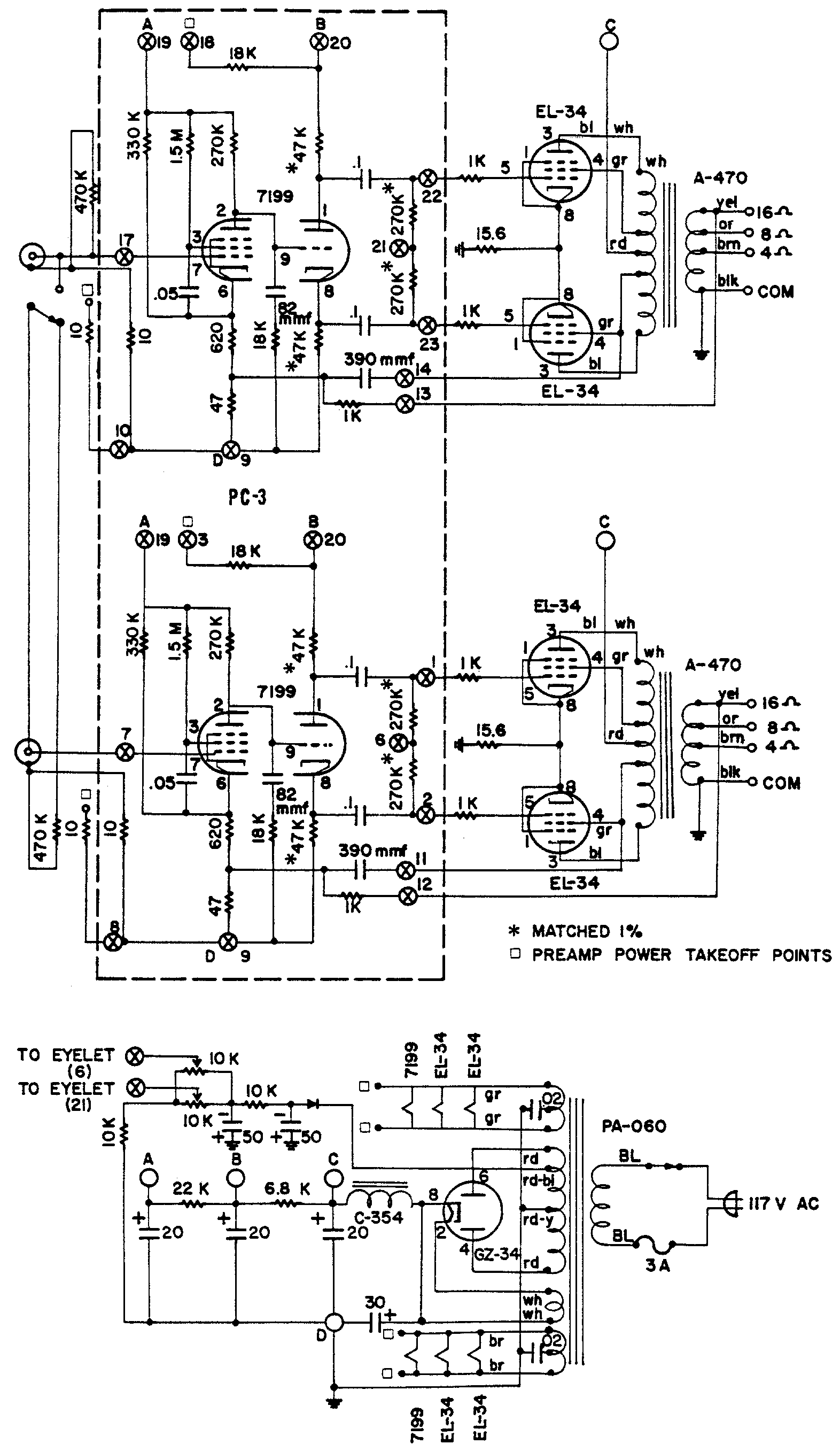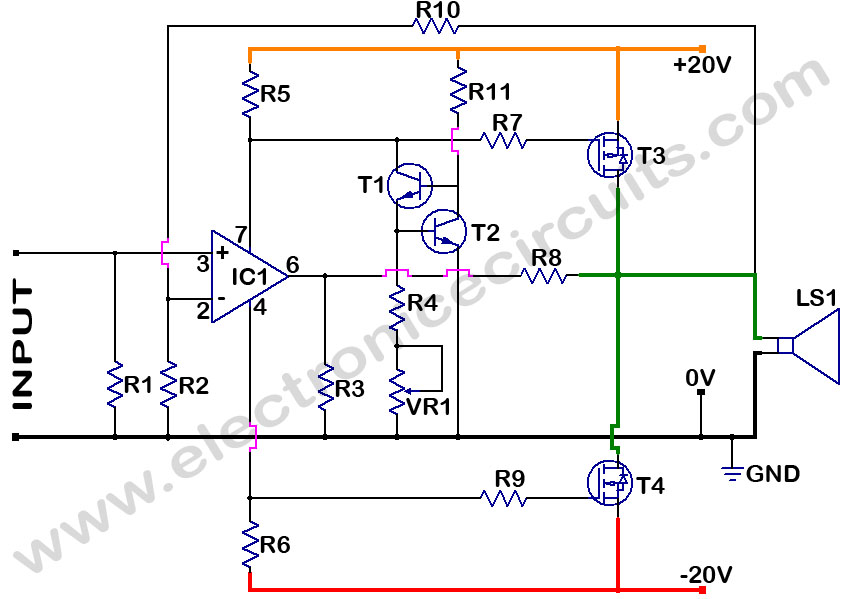
Amplifier with Tone Controls and Soft Switching
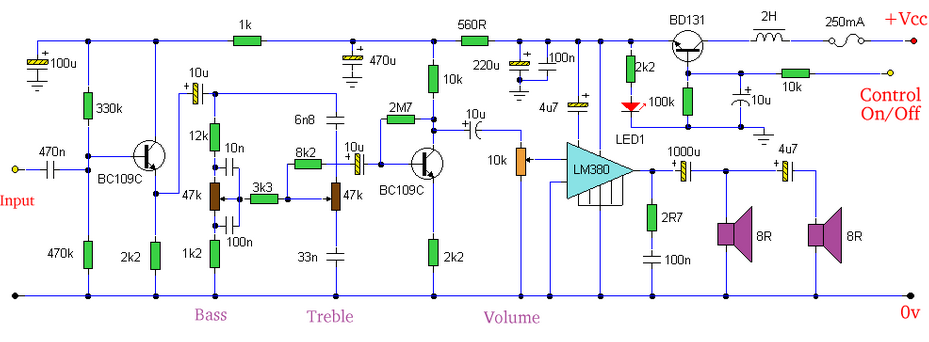
Built around an LM380, this amplifier includes tone controls and electronic soft switching. The soft switching circuitry ensures power is balanced.
The LM380 is a power audio amplifier capable of delivering up to 14 watts of output power. It is designed to operate in a variety of applications, including consumer electronics and professional audio systems. The amplifier circuit typically consists of the LM380 integrated circuit, passive components such as resistors and capacitors for tone control, and additional circuitry for implementing the soft switching feature.
Tone controls in this amplifier allow users to adjust bass and treble frequencies, enhancing the listening experience by tailoring audio output to personal preferences or specific acoustic environments. The tone control circuit may utilize potentiometers to provide variable resistance, influencing the feedback network of the amplifier and altering the frequency response.
The electronic soft switching circuitry is crucial for minimizing audible switching noise and ensuring smooth transitions between power states. This feature is particularly beneficial in applications where the amplifier must operate quietly or in sensitive audio environments. Soft switching can be implemented using additional transistors or MOSFETs that gradually ramp up the power to the amplifier, reducing the likelihood of pops or clicks during power-up and power-down sequences.
Overall, this amplifier design combines the robust performance of the LM380 with user-friendly features like tone controls and soft switching, making it suitable for a wide range of audio applications. Proper layout and component selection are essential to achieve optimal performance, including considerations for heat dissipation, power supply decoupling, and signal integrity.Built around an LM380, this amplifier includes tone controls and electronic “soft switchingâ€. The soft switching circuitry ensures power is b.. 🔗 External reference
The LM380 is a power audio amplifier capable of delivering up to 14 watts of output power. It is designed to operate in a variety of applications, including consumer electronics and professional audio systems. The amplifier circuit typically consists of the LM380 integrated circuit, passive components such as resistors and capacitors for tone control, and additional circuitry for implementing the soft switching feature.
Tone controls in this amplifier allow users to adjust bass and treble frequencies, enhancing the listening experience by tailoring audio output to personal preferences or specific acoustic environments. The tone control circuit may utilize potentiometers to provide variable resistance, influencing the feedback network of the amplifier and altering the frequency response.
The electronic soft switching circuitry is crucial for minimizing audible switching noise and ensuring smooth transitions between power states. This feature is particularly beneficial in applications where the amplifier must operate quietly or in sensitive audio environments. Soft switching can be implemented using additional transistors or MOSFETs that gradually ramp up the power to the amplifier, reducing the likelihood of pops or clicks during power-up and power-down sequences.
Overall, this amplifier design combines the robust performance of the LM380 with user-friendly features like tone controls and soft switching, making it suitable for a wide range of audio applications. Proper layout and component selection are essential to achieve optimal performance, including considerations for heat dissipation, power supply decoupling, and signal integrity.Built around an LM380, this amplifier includes tone controls and electronic “soft switchingâ€. The soft switching circuitry ensures power is b.. 🔗 External reference
